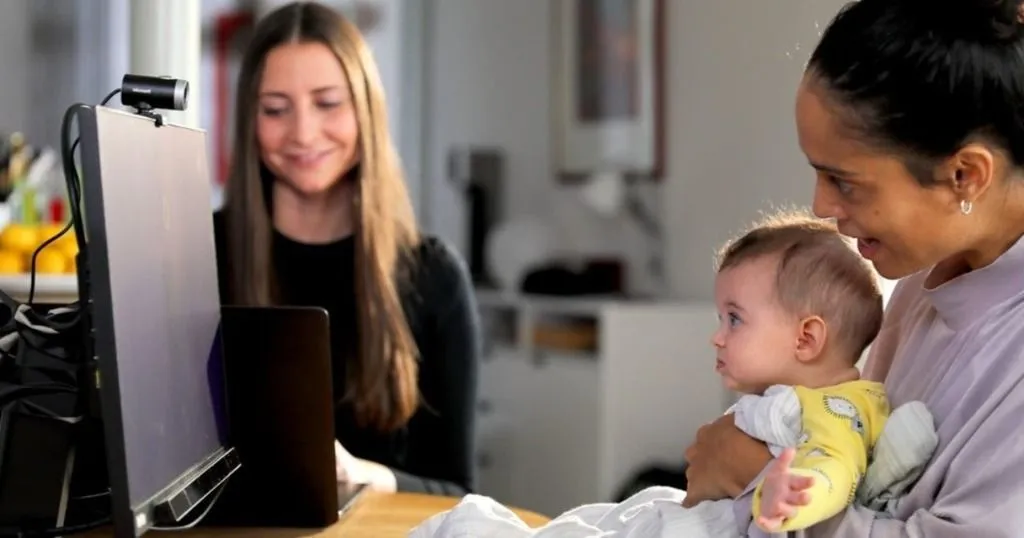Early exploratory behavior in infants with Down syndrome
Object exploration is part of infants’ early development. How do infants with Down syndrome explore the world around them? And how is exploratory behavior related to their general development?
Posted by
Published on
Thu 28 Nov. 2019
Topics
| Child Development | Down Syndrome | Infants | Motor Development | Observational Research | The Observer XT | Developmental Disorder |

Down syndrome (DS) is one of the most common genetic disorders in the world. Children with DS experience intellectual disabilities, as well as delays in motor and cognitive development. They are also at risk for a range of health conditions, including heart defects, stunted growth, and obesity.
To provide the best care for children with DS, it is vital to study their early development. Understanding learning processes in different areas of development, as well as the way they influence each other, helps us to develop targeted interventions.
In the current study, Dr. Deborah Fidler and her colleagues examined the link between overall development and exploration behavior in infants with DS.
Exploratory behavior stimulates development
When infants start exploring the world around them, they increasingly engage with the people and objects they encounter. This provides important opportunities to learn and grow!
Indeed, evidence suggests that object exploration is an important factor in different areas of development.
For example, experiences with objects lead to a better understanding of their physical properties, causal relations between movements, and the best ways to use them. These skills support mental representations of objects and help infants understand intentional behaviors.
In this way, object exploration helps to form the basic skills for motor development, communication, language acquisition, and social interaction.
How do infants with Down syndrome develop?
Infants with Down syndrome show early delays in motor development, particularly regarding milestones such as reaching, grasping, and walking. Across their lifespan, they are vulnerable to problems in goal-directed behavior. Indeed, research shows that later difficulties with planning can be observed by toddlerhood.
As a group, people with Down syndrome also show a great deal of variability in outcome. For example, some individuals show milder forms of intellectual disability and language difficulties, while others may experience severe impairments across a range of developmental domains.
To improve our understanding of Down syndrome, Fidler and her colleagues argue that it is important to examine infant developmental profiles. In line with research in other clinical groups, they suggest that developmental delays in children with Down syndrome may be rooted in diminished exploratory experiences during infancy.
Observing exploratory behavior
The researchers studied 45 infants with Down syndrome, with an average age of 9.5 months. They collected information on each child’s development and family history, and administered the Bayley-III developmental assessment.
This assessment includes indices for cognition, receptive communication, expressive communication, fine motor development, and gross motor development.
Infants participated in a one-minute object exploration trial. They were seated on the lap of their caregiver and supported when necessary, to ensure that they could move their head and arms properly. The examiner placed an unconventionally-shaped teether on the table and observed infants while they explored it visually, manually, and orally.
Video recordings of the trials were coded using The Observer XT. To account for small differences in trial duration, the researchers analyzed their data based on the percentage of time engaged in each exploratory behavior.
Infant profiles
The research team used their observational data to identify different infant developmental profiles. Using latent profile analysis, they found the best fit for a two-profile solution. Based on the behavioral characteristics of each profile, the infants were categorized into either passive or active exploration profiles.
In the passive exploration profile, infants showed a moderate amount of visual exploration (51% of the trial), a low-to-moderate amount of manual exploration (20% of the trial), and a minimal amount of oral exploration (0.36% of the trial).
Infants in the active exploration profile showed a moderate amount of visual exploration (60% of the trial), a high degree of manual exploration (79% of the trial), and a low-to-moderate amount of oral exploration (20%).
The relationship between exploration and development
When compared to the developmental assessment, results showed that the active exploration profile was associated with higher cognitive, expressive communication, and receptive communication scores. This profile was also associated with a higher cognitive age on several indices.
Additional tests showed that factors like maternal age, premature birth, and congenital heart defects were unrelated to the probability that infants belonged to either profile.
Individual needs
These findings show that infants with Down syndrome display systematically different levels of visual, manual, and oral exploration. Differences in passive and active profiles were most pronounced in the amount of time spent in manual exploration of objects. Also, exploratory behaviors were related to general development.
These results demonstrate the within-group variability of people with Down syndrome and highlight the need to tailor interventions to individual needs.
Early intervention for children with Down syndrome
As early exploration forms the basis for other areas of development, it is important to stimulate this behavior in infants with Down syndrome.
Infants showing a passive form of object exploration may benefit especially from this type of intervention. For infants who already explore more actively, object exploration can be used as a platform for enriched learning experiences in other developmental areas.
Because the current study did not include a comparison group, it is difficult to know whether these patterns are specific to infants with Down syndrome, or whether they can be observed in infants with developmental disabilities in general. Therefore, future research should focus on exploratory behaviors in other clinical groups as well.
References
Fidler, D.; Schworer, E.; Prince, M.; Will, E.; Needham, A.; Daunhauer, L. (2019). Exploratory behavior and developmental skill acquisition in infants with Down syndrome. Infant Behavior and Development, 54, 140-150.
Related Posts

How to deal with noncompliant toddlers

Parent-child interaction in autism: play behavior

